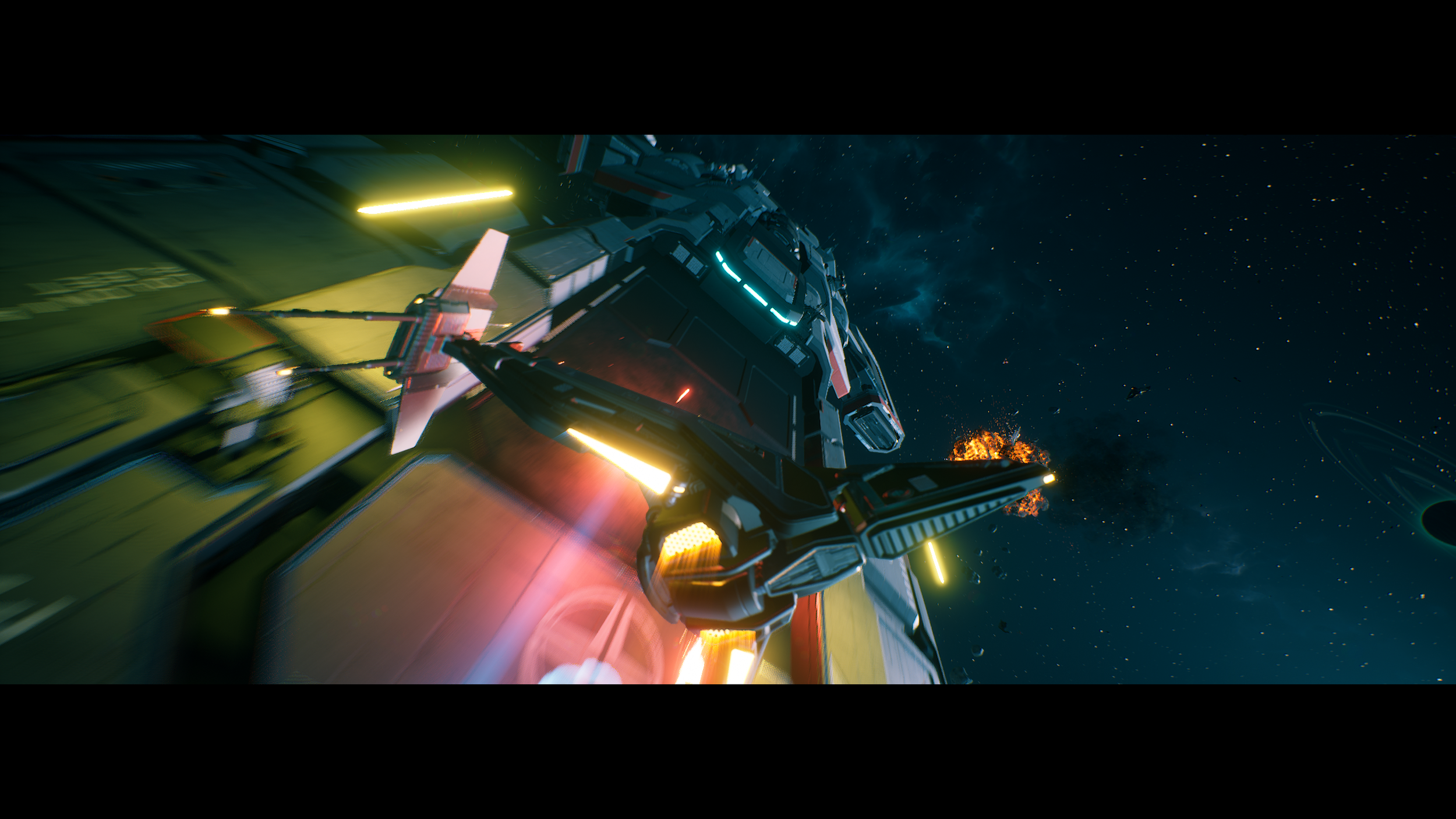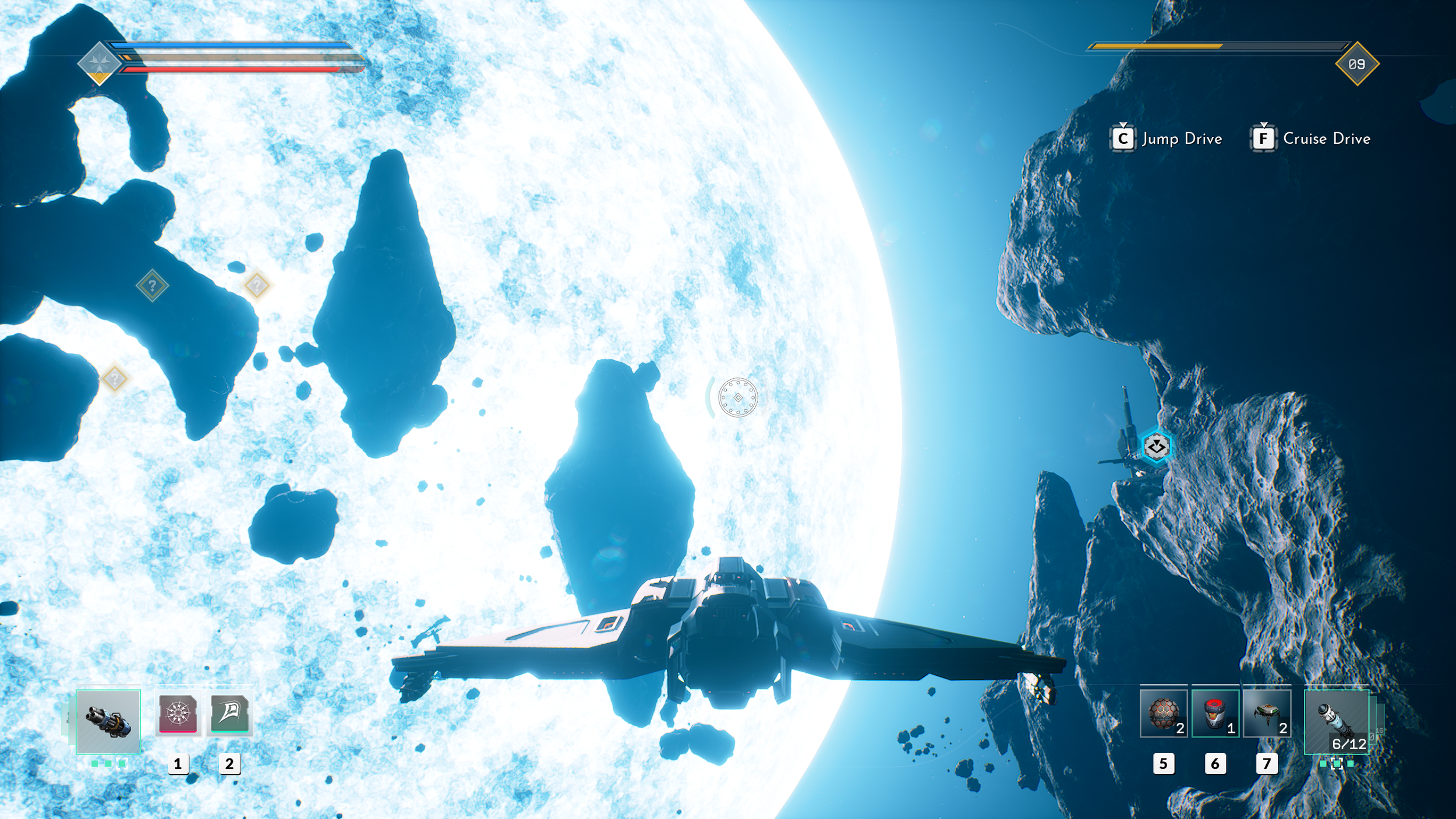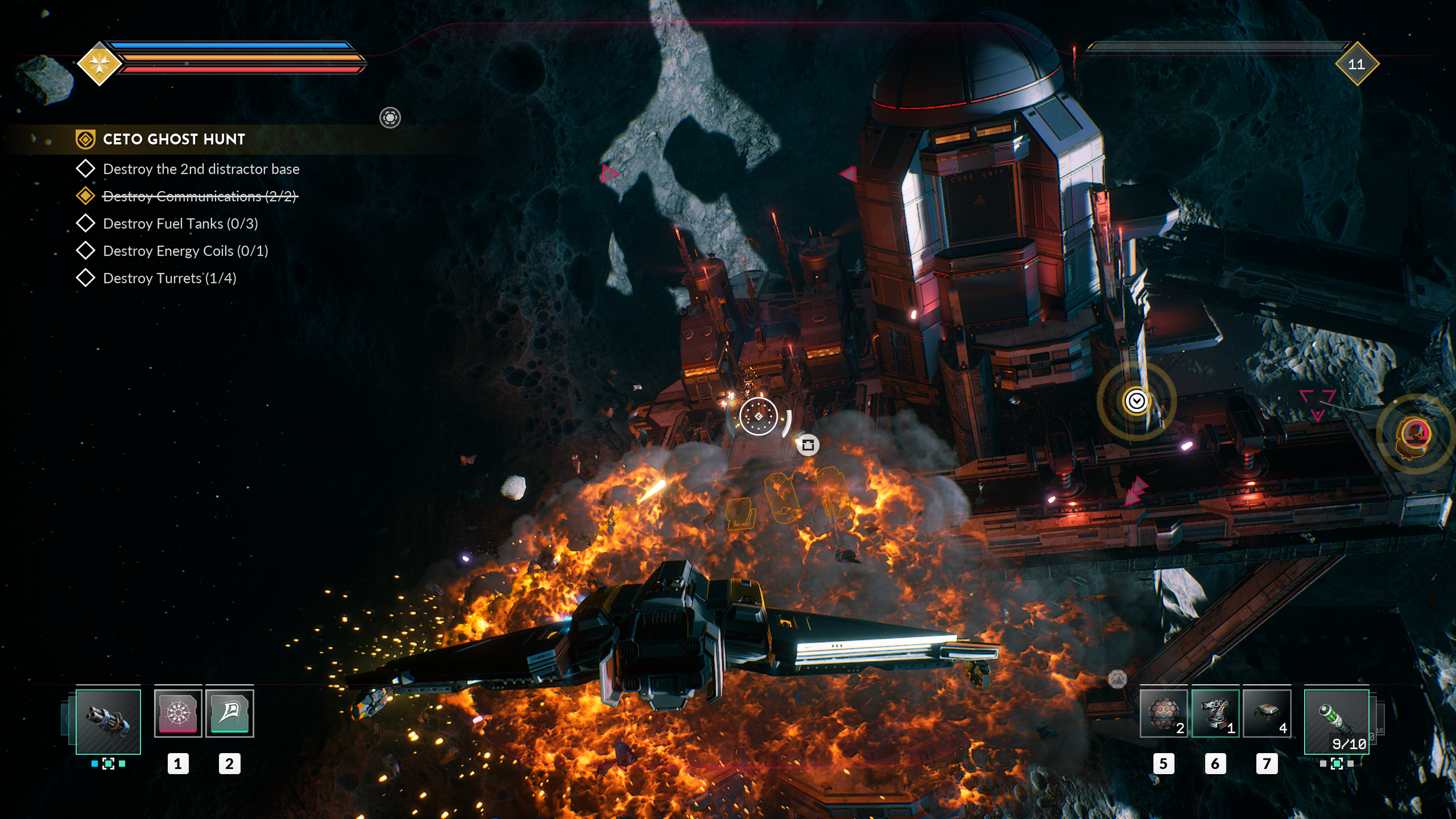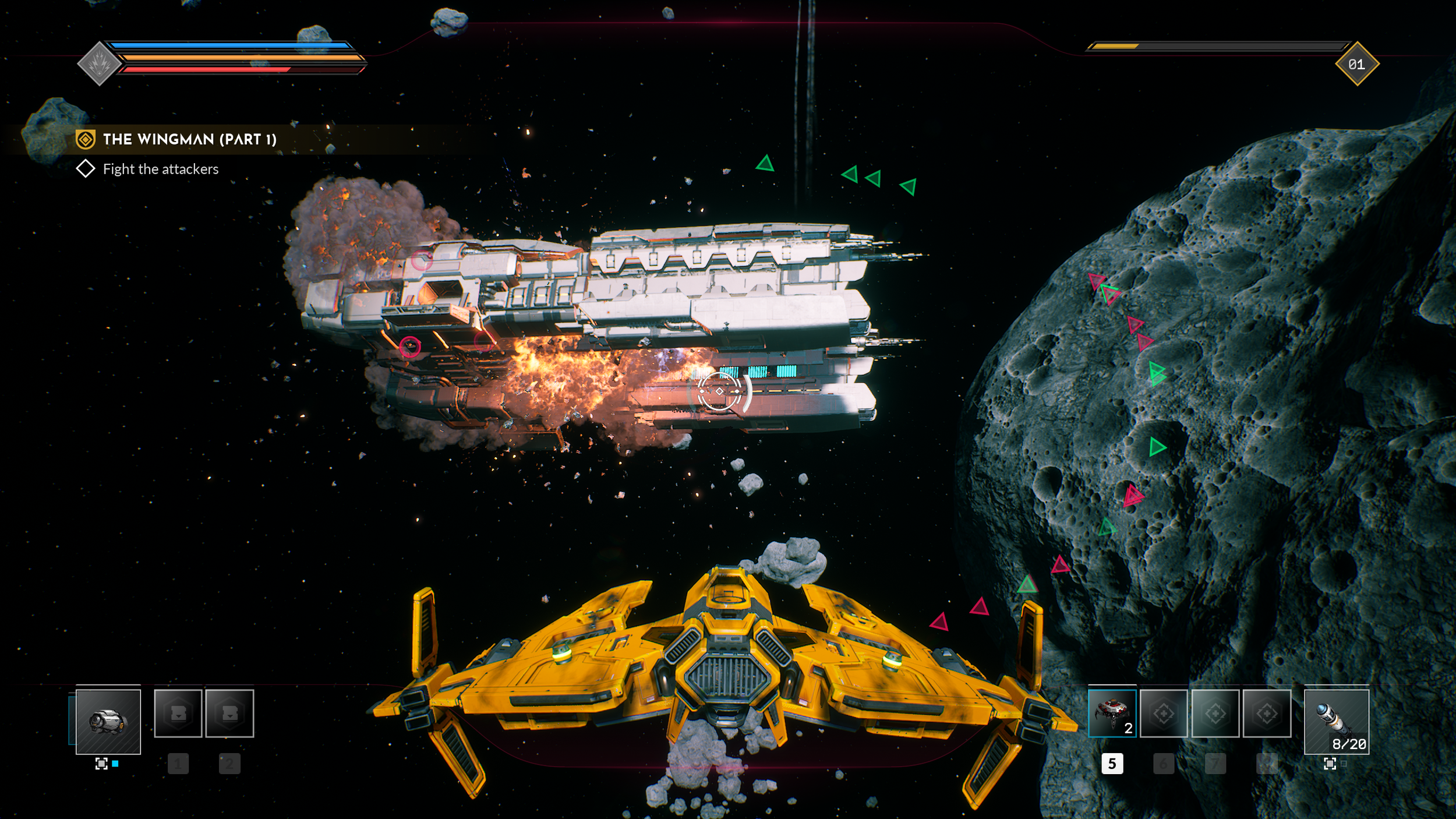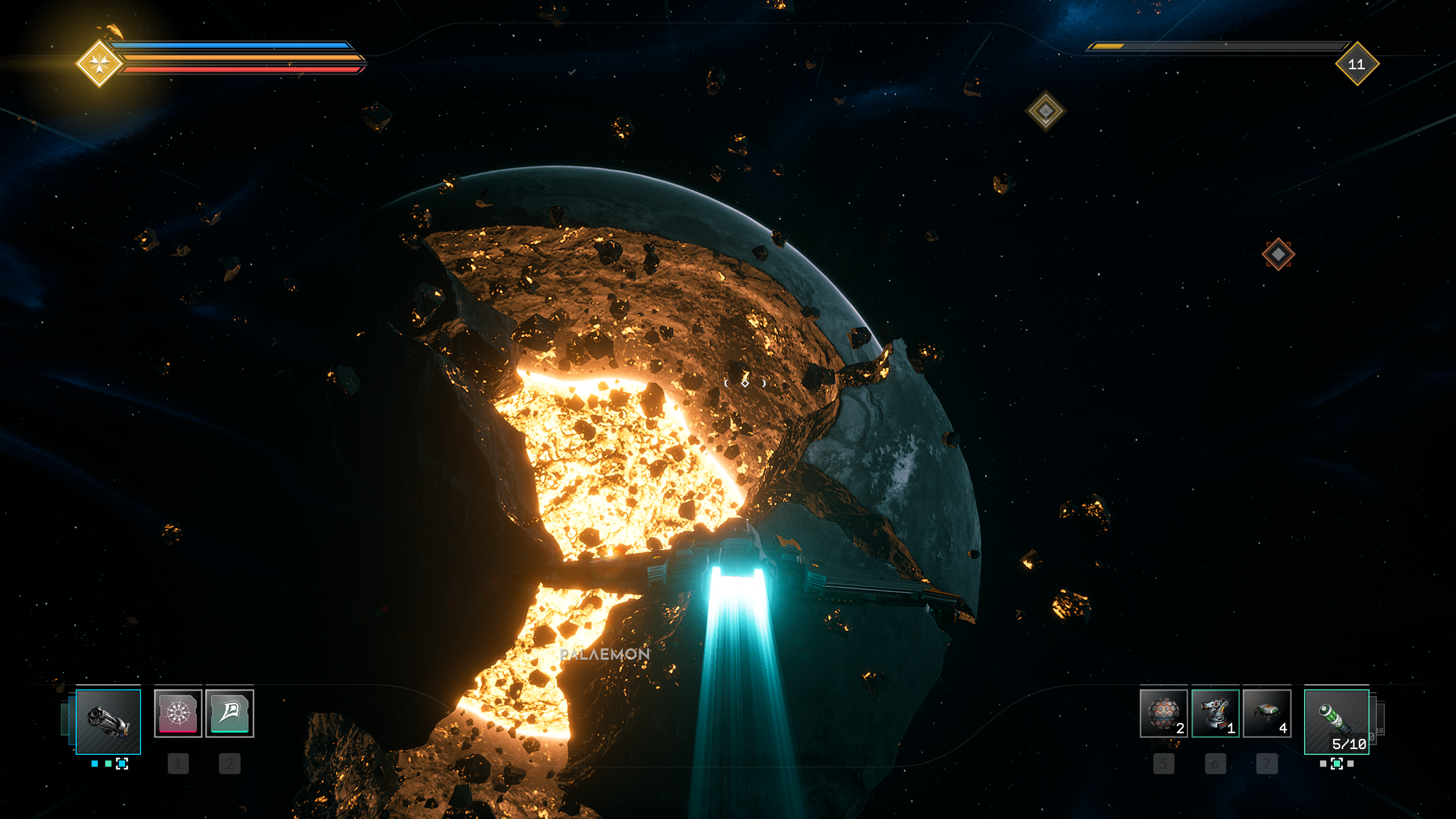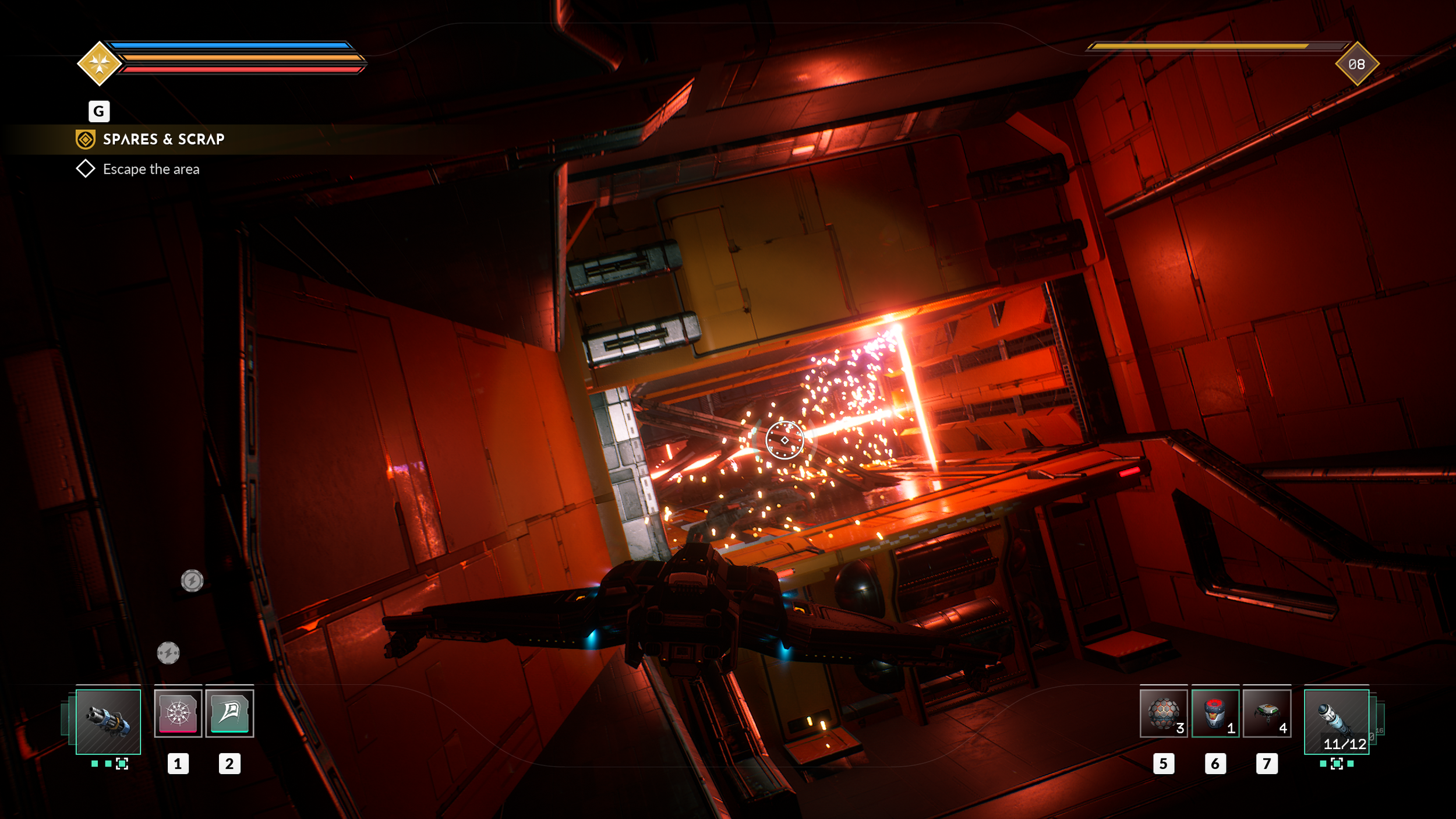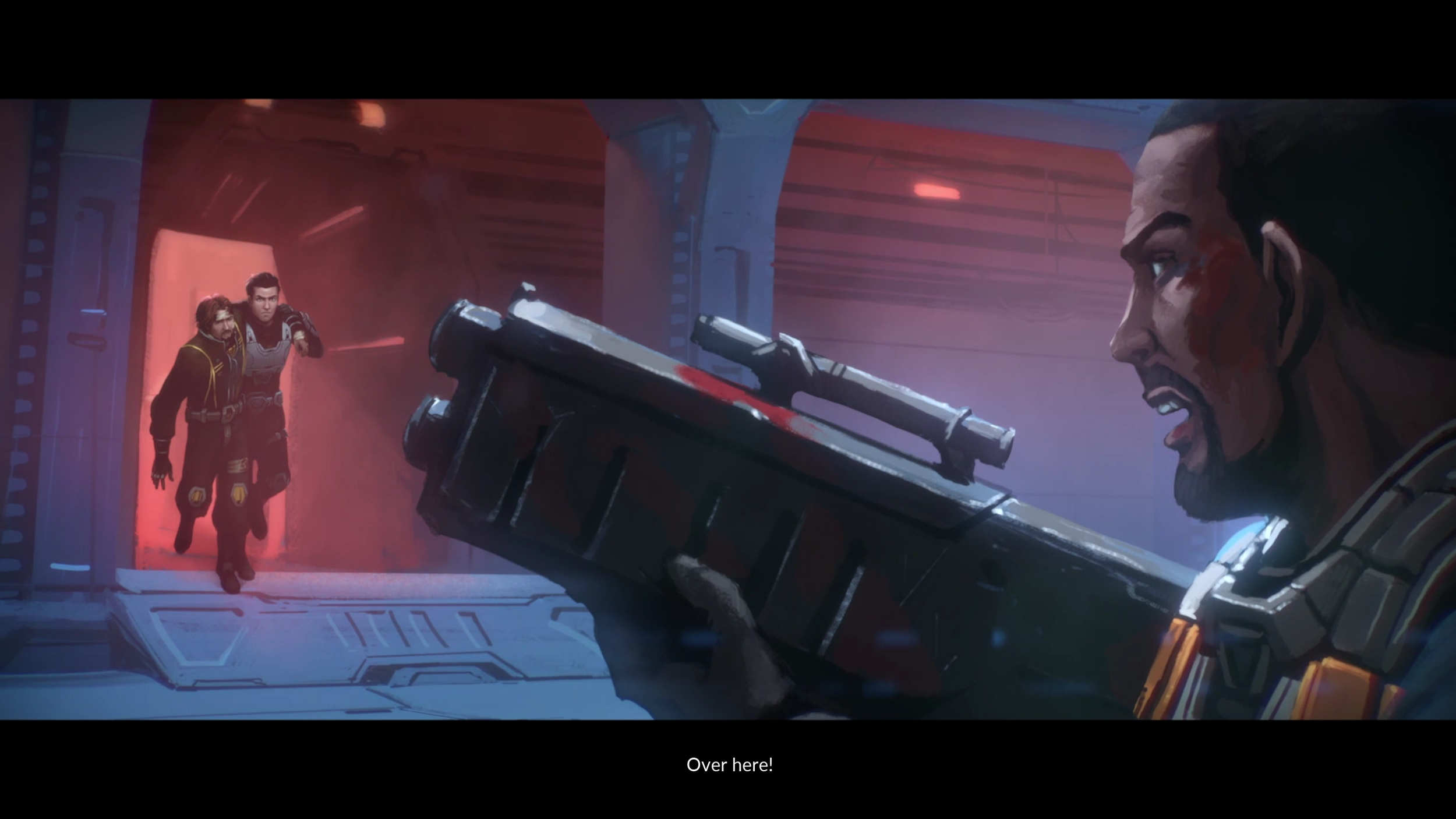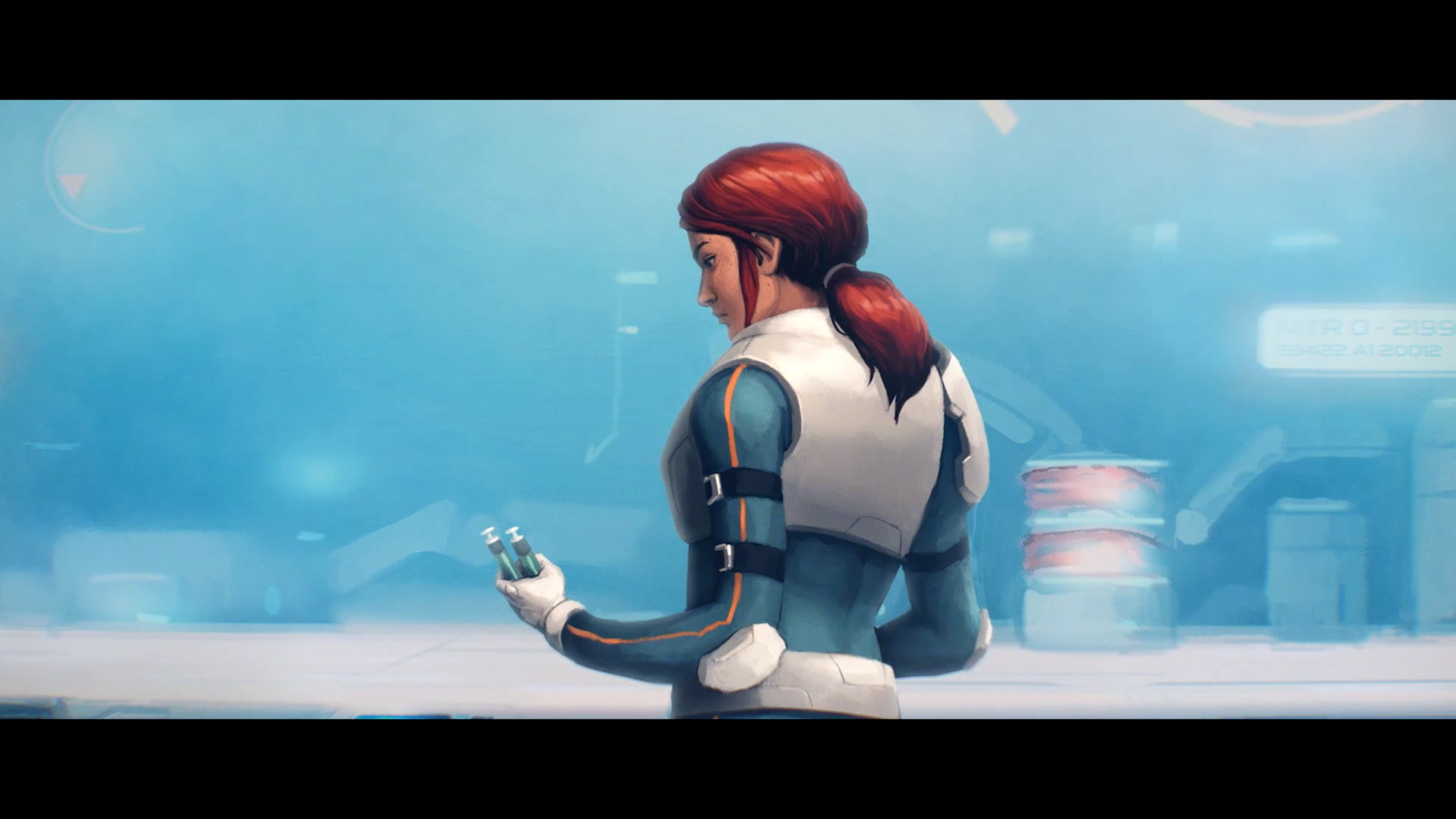I remember one day after school seeing my technology teachers excitedly crowding around a new 386 computer, having a nosey the game I got a glimpse of was Tie Fighter. I’d only ever seen something like that in the arcades and it was a tantalising taste of things to come. The early days of space games were exciting times when developers were trailblazers. Where would the genre be today if the team behind Freelancer or Elite had just decided to do something more conventional? Even with the relatively limited power developers had to play with, they crafted some absolute gems.
After what seems to be a very long time, space games have been having something of a renaissance. At the heavy end of the spectrum we have Elite Dangerous, a fully loaded simulation based in our own galaxy with a good degree of futuristic licence. Start Citizen is also an impressive prospect but is woefully behind in production, to the point many predict it will never reach 1.0 in any meaningful state. These meaty space sims are awesome for what they do, but sometimes I just want to do a Luke Skywalker and fire a salvo of blaster fire while strafing an enemy space station.
In 1999 Interplay released Freespace 2, a space shooter that was action all the way. The space battles were incredible but more impressive was the sense of scale when hurtling between massive Dreadnoughts and fending off hostile ships in every direction. Since then I have not felt the same rush playing a space game, that was until I booted up Everspace 2.
Origins
Everspace 2 is the sequel to the 2017 space shooter of the same name. The original game was a solid space-based action shooter that came wrapped around a decent rogue-like romp. The idea was to move from each encounter, gathering experience and progression with each fight. When your trusty ship inevitably exploded into a cloud of space dust, it would be time to start over in true rogue-like fashion. I, like many others, thoroughly enjoyed the explosive combat and visual splendour of the various stages. Yet after the freedom of games like No Man’s Sky, the first game left me feeling a little boxed in. It turns out like folks over at Rockfish Games also fancied a more expansive jaunt into space.
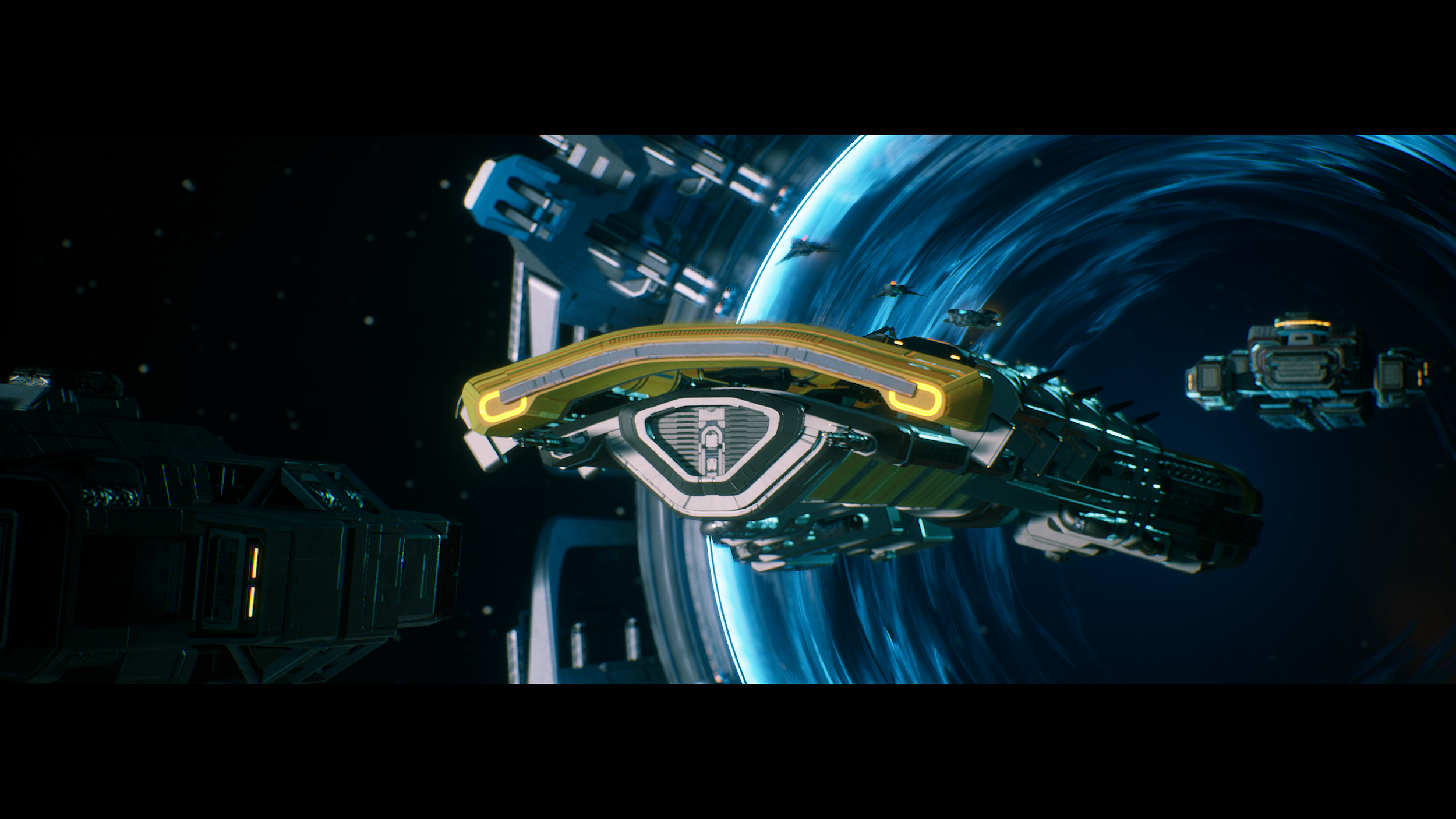

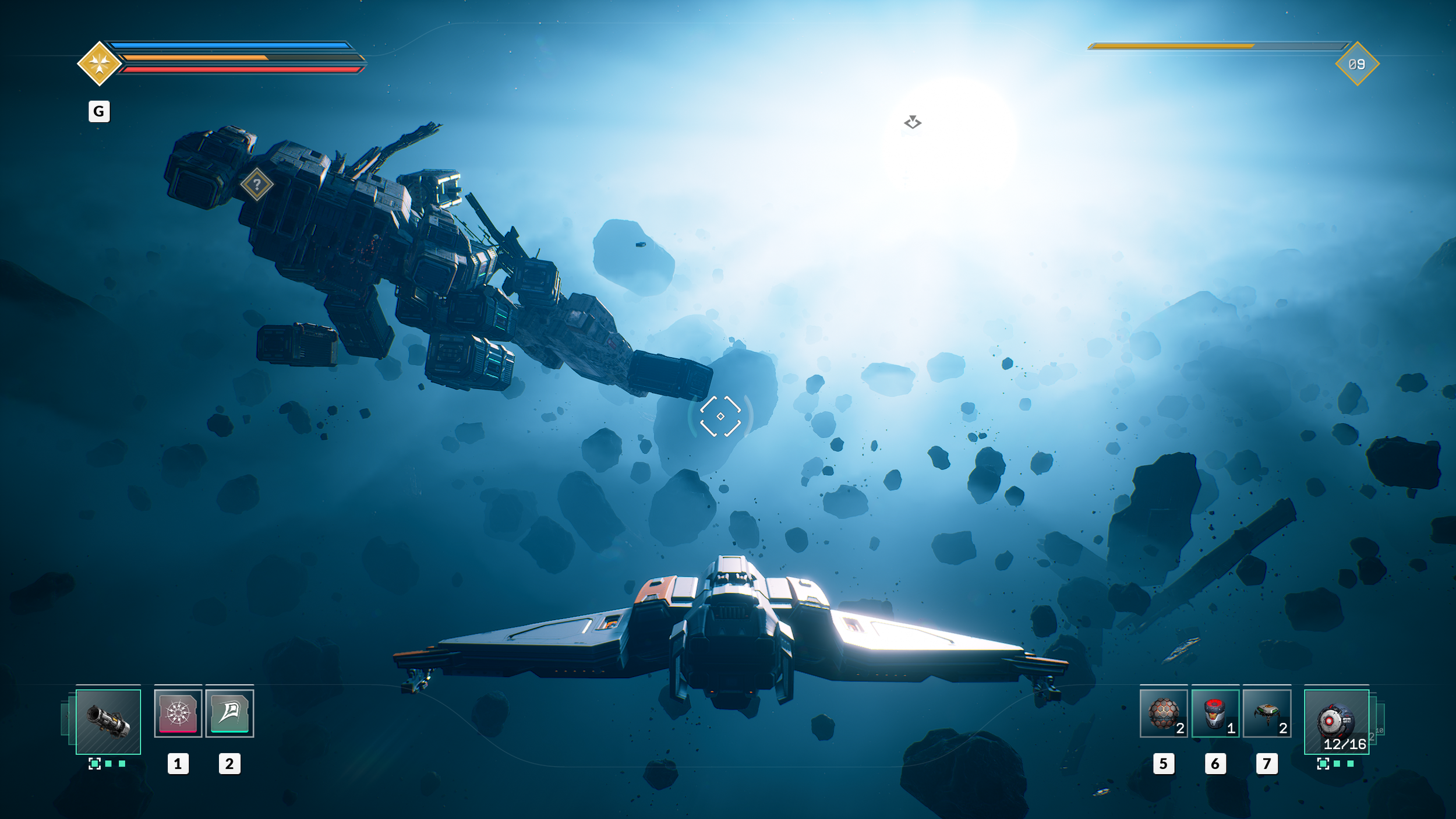
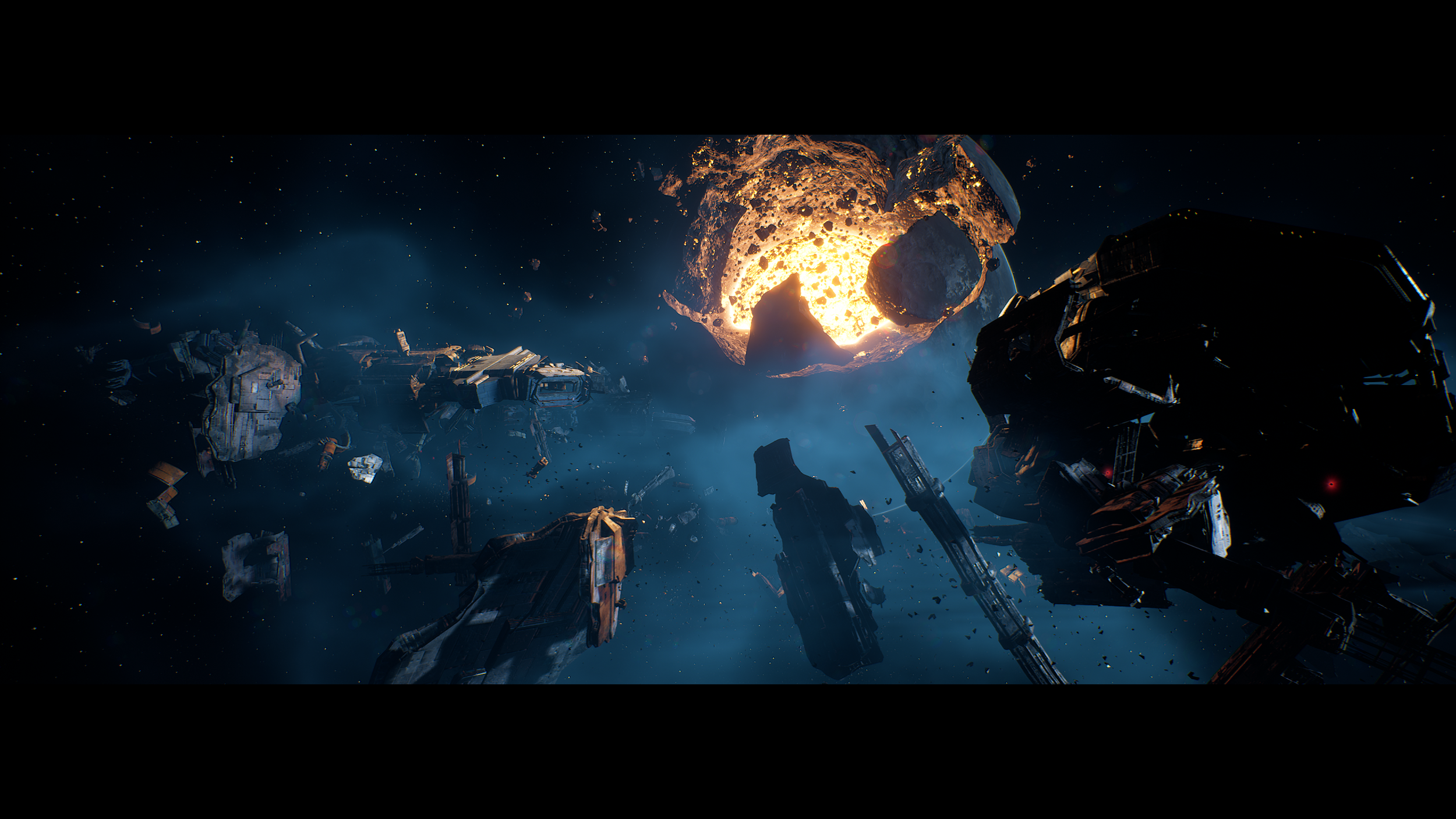
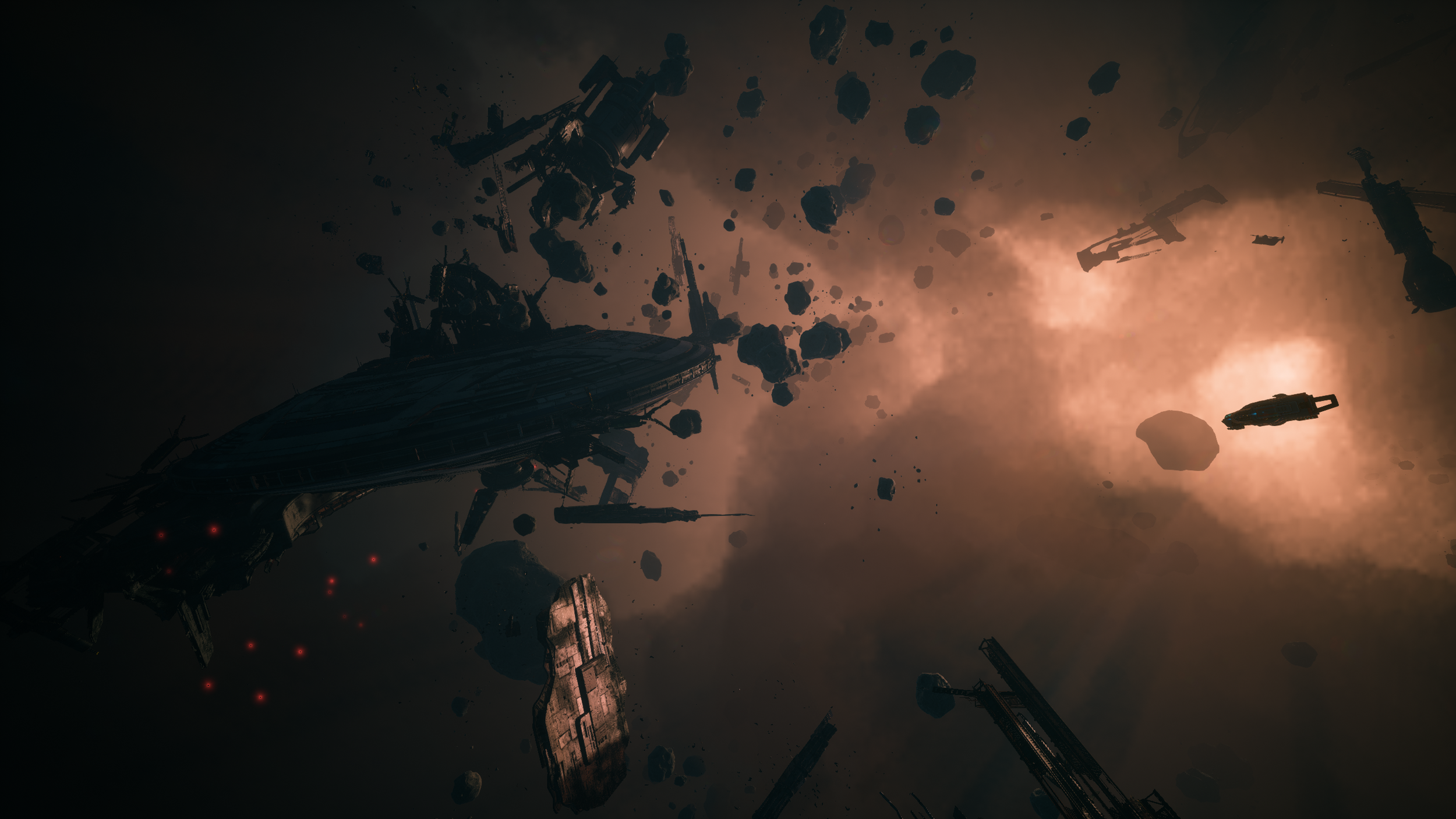
Lost in Space
With Everspace 2 we now have a fully fleshed-out game world to explore. You still play within bordered levels like in the original, but these are embedded within a full galaxy that can be warped around in real time. In games like Elite, every inch of space is reachable and represented in the playable game space. In Everspace 2, we see a hybrid system that allows you to enter a different travel mode between each location. This works really well because the transition between the two modes is almost instantaneous. In addition, each time you drop out of warp the play space is a faithful representation of where you have thrown down your anchor. So for example, in one mission I had to get really close to the sun in the Ceto system. As I appeared in the zone the blue dwarf sun completely dominated the view, it was jaw-dropping. The way they have meshed these two modes makes the game feel like a continuous experience; it’s very clever.
The playable areas are now also bigger and have much more going on within them. I love how when you enter a play space your cruise drive is already hurtling you forward to the action. If you follow the game's story, each of the locations you visit has been hand-crafted for these missions. However, there is also a whole range of procedural missions you can either pick up on job boards or happen across when warping through space. You might get a distress call to help a stranded freighter or discover a secret bandit stronghold that needs dealing with. Navigating the tunnels in a giant space rock is something I always craved in games like Elite, but unfortunately they never really did anything like this. Even when you have finished a mission, there are almost always things to see in the zone such as resource-heavy debris fields or secret stashes.
When you take control of your ship the first thing that hits you is how easy it is to fly. Thanks to boosters on pretty much every side you can move in any direction, which immediately gives you a high degree of control. This is essential for navigating through some of the more snug situations you end up in. Very often you will find yourself slowly making your way through the creaking innards of a derelict space freighter or underground cave network. These internal areas are completely seamless with the outside and run surprisingly well. You will also come across a range of puzzles such as asteroids covered in explosives that you must activate within a certain threshold. Other times you must clear debris and then drop power modules into a generator. There is a hugely accomplished level of physics running in the background, which you can see when items are flung in all directions or you notice your ship's boosters straining to tow larger items of debris.
Explosions in Space
There are a really good range of weapons for you to choose from and thanks to their unique attack methods there will be a combination for all play styles. My favourite attack strategy is taking out attack drones from range with a Rail Gun before moving in to shred them with my autocannon. Weapons will vary in how much they damage both shields, armour and hull integrity. This is a well-trodden system that gamers will pick up quickly as it’s just a case of swapping to the right weapon at the right time. Secondary weapons are also decent with a mix of rockets, homing missiles and mines. On top of the normal ordinance, you also have access to special equipment that can do anything from unleashing devastating EMP attacks to boosting you away from danger. Interestingly these items can be upgraded to give a more refined effect, again depending on your play style. If all that wasn't enough, each ship class has a very powerful ability baked in and this will charge as you fight.
Of course, great system management would be pointless if the game's combat wasn’t good but thankfully it absolutely rocks. Most encounters are with ships that are roughly the same size as the player but occasionally I have come across bigger vessels that could be considered boss fights. These ships not only have fighter ships as escorts but also weapon hard points that can be attacked and destroyed. Likewise, enemy bases can be found embedded in giant asteroids and exploding the various structures would give Just Cause a run for its money. Enemy AI is decent in that they will duck and weave will an admirable amount of skill. When you do take down enemy ships there will be a satisfying moment when they are clearly venting O2 from ruptures in the hull before spinning into a final explosive crescendo.
Tinker Town
Despite the arcade exterior, there is a pretty decent action RPG lurking under the surface of this game. Your first ship comes with enough firepower to get you started but pretty soon you will need to start swapping equipment out for better versions. Aside from weapons you also have various systems such as an energy core, boosters, shields etc. The quality of these items can be ascertained by both the level and quality (green, blue etc). Sometimes you will have a fantastic blue item but it will still be outperformed by a higher-level green item. There can even be individual traits to some devices which gives the loot an almost Diablo favour. Like all games with equipment, it is just a case of comparing to see which you want to bolt in. Thankfully the way information is presented to the player makes comparing items a breeze. You can also break items down and feed the components into the game's crafting system.
Like many aspects of Everspace 2, the developers could have done less and just relied on the outstanding combat to carry the game. However, the amount of ways you can improve your ship, which is essentially your character, deserves high praise. Each change you make to your ship gives a tangible effect to the gameplay. Swapping out a faster charging shield or raising the level of your favourite weapon all make real changes that the player can see. In addition to item scores, you also have more RPG aspects such as pumping points into base values such as overall ship health or critical hit chance. As the number of ally characters increases you can also give them resources to improve how your ship performs in the field: the speed at which your ship enters cruise for example or the range of your tractor beam.
Space Opera
When in early access the story was starting to be attached to the game but as you would expect it was not in a finished state. When I saw the storyboard-style dialogue I assumed this was just a placeholder for a fully animated offering. However, on release, the developers have opted to keep those same illustrated cells and I love it. Obviously, this comic book-style appearance meant that the team didn’t have to spend more time putting together fully animated cut scenes for each story beat. In addition, there are some animated sections using the in-game assets for the more action-driven dialogue scenes and these work very well.
All of the dialogue has been voice-acted and to a high quality. Given the nature of the game and the emphasis on action, I’d assumed the voice acting would be low effort or text based but I was definitely wrong as the voice actors put in a respectable performance. Even the conversations with traders and base commanders are fully voice-acted, even though you will start to notice the same lines over time. One question that has come to mind a few times while playing is how would this game feel with a co-op option. I guess the need for co-op space shooters is now being well-sated with other games such as No Mans Sky, so I would say it’s also good to have a single-player game you can just get lost in.
Is it PC?
So as you can probably see from the screenshots, this game is gorgeous. However, like many games static shots don't do the visuals justice so will link a video from one of my favourite sim YouTubers Obsidian Ant. There have been so many moments during my playthrough where I have just sat back in awe of what was on my screen (but not for too long). In one area of the first system, you enter a zone covered in a layer of space gas. As you breach the upper section of the space cloud, the sun's rays cast light beams across your path and it is truly beautiful. Whether it be spaceports, planet surfaces or gigantic ship graveyards in space; this game's visuals never fail to impress.
On a more macro level, the game also has a lot of minutiae to enjoy. All of the game's moving parts, such as space traffic and asteroid fields, all have a tonne of detail lavished on them. You will often find yourself a nose away from these objects as you hide from incoming fire and the objects are all furnished with quality textures. It is worth mentioning at this point that the game also runs very well on my system, an overclocked i9 12900K, 32GB of DDR5 RAM and an overclocked 3080ti. At 1440p and all settings to max I’ve been getting between 120 and 144 fps, with the occasional drop to the mid-nineties in very busy areas.
So you can play the game with either controller or mouse and keyboard. If you are playing on PC I would highly recommend the latter because for me it gave me much more control. When docked there is a fair amount of menu management and just by design, this is easier with a mouse. As you push the mouse the ship's direction tracks the central reticule effortlessly. You can tinker to your heart's content and rebind keys as you wish. There are also a lot of controls to map and a controller only has so many buttons. With that said, a controller is a valid option and I can see this being a winner on Steam Deck when verified.
Conclusion
This is how you make a game in early access. Even from the very first build I got my hands on, the game was rock solid. With this firm foundation in place, the developers have then worked their way across the systems adding meat to the bones. Even with the first two systems playable in early access (thanks to Rockfish for the code), there were easily thirty-plus hours to blast through. Now with eight full systems to enjoy, this game has an absolute tonne of content, all bolstered by a huge level of replay value.
One of the biggest factors that make this game work so well is how cohesive each element is. Every system overlaps with the others perfectly. Inertia makes the ship feel good to fly and this promotes a great feeling when exploring. Wonderful physics make puzzles fun to try and good artistic direction ties the whole thing together nicely. There is also enough space sim in there to make this more than just an arcade space shooter. For example, you can flick a switch to turn the inertia dampeners off which completely changes how you fly.
While there are borders that separate the play spaces and wider universe, these are masked with a deft touch. Yes, this is a looter shooter at its core. However, other aspects of the gameplay are so fleshed out they add a depth that is both surprising and welcome. I am sure the comparisons to No Man's Sky will be made but they really are two very different games. Ultimately, Everspace 2 has elements from a few games I have mentioned but then elevates each one to make this one of the best space games we have seen in years.

